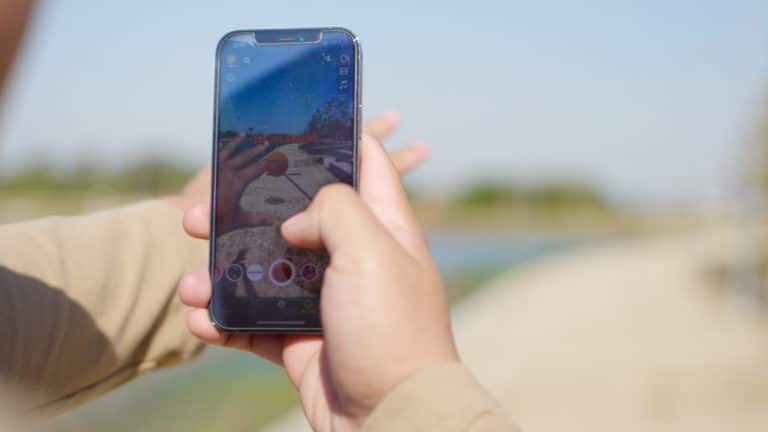
Being active outdoors isn’t everyone’s first choice of a good time. Activity is essential to good health, though: being fit increases your heart and lung function, builds your stamina and provides other significant health benefits.
Around 53 percent of Americans over the age of 6 had outdoor recreation time in 2020. This number is increasing, and people will likely participate more in such activities as the years go on, thanks to an unlikely source that’s encouraging more active lifestyles — augmented and virtual reality.
AR Gets People Moving
Augmented reality (AR) allows people to see virtual things in their world. Many shopping websites or search engines now feature an option to display an item right where you are. This feature is handy for people who want to see what a product looks like with their current decor before they buy it.
Augmented reality can also help someone know if a particular dog breed or couch model would fit in the space they have. AR isn’t completely perfect, but it’s a step toward a less wasteful future that can come from purchasing only what people need and know will fit in with their current lifestyles.
In 2016, the release of Pokémon Go allowed people to discover and catch Pokemon in the real world using AR. This game was most people’s first experience with mainstream augmented reality, and it paved the way for other apps and programs after it.
Pokémon Go players venture around town to collect monsters and spin “Pokéstops,” which give rewards that allow people to continue playing. Players can tap on a Pokémon they see on their screen, and then their device’s camera activates to show the character in the surrounding area in real life. It’s easy to see why this game would be a hit and get people out of their homes.
Pokémon Go was revolutionary in getting more people active and outside. The game even has an egg-hatching mechanic, which, like the main line of Pokémon games, allows an egg to hatch into a random Pokemon after a certain number of steps. On average, players walk about 2,000 steps more on days when they play the game.
VR Offers New Experiences
Unlike augmented reality, which puts something digital in a view of the natural world, virtual reality offers a completely simulated environment capable of just about anything. A VR headset can immerse players in a completely digital world where they can interact with things.
In the past, it could be challenging to tell whether an experience or investment was worth it. For example, when a boat costs $35,000 on average, not everyone can take the risk of getting one in case they end up disliking the activity. With VR, they can experience boating as a virtual activity and decide whether it’s for them before investing in something expensive.
VR allows people who can’t afford certain experiences to participate in something if they can’t leave the house another way. Virtual therapy is making strides toward becoming widely accessible. People who might not be able to go out because of external or internal pain can still receive the treatment they need.
Since VR can create a brand-new world in just a headset, people can use it to substitute for outdoor activities they may not be able to do anymore. If someone has an injury that keeps them from cycling, they can play a game that can make them almost relive the experience.
Many people have found it difficult to stay home without much stimulation during the pandemic. Events like county fairs have been canceled, and spaces with many people, like theme parks, have been shut down temporarily or have limited access. Playing a roller coaster or other VR game that allows them to experience what they’re missing can keep people hopeful for the return of fun events.
About 30 percent of virtual reality games can give players a healthy amount of exercise. While working out at home may not be as exciting as being outside, it can entice people to continue their fitness journey. People may want to go out and experience outdoor activities for themselves once they’re able.
Technology Can Transform the Future of Fun
Virtual and augmented reality can work together to make people more active. Individuals are either compelled to go outdoors or experience a simulated version of the outside world by spending time with technology.
VR can make outdoor experiences accessible to those who can’t be outdoors, while AR can encourage people to explore the world around them. In most cases, technology can be a tool to motivate people to be healthier. In 2021, one thing is for sure: playing video games doesn’t mean you’ll stay inside all day.
 April Miller is a senior writer at ReHack Magazine. She specializes in VR/AR, IoT, and business technology. See her work here and follow her @rehackmagazine.
April Miller is a senior writer at ReHack Magazine. She specializes in VR/AR, IoT, and business technology. See her work here and follow her @rehackmagazine.

